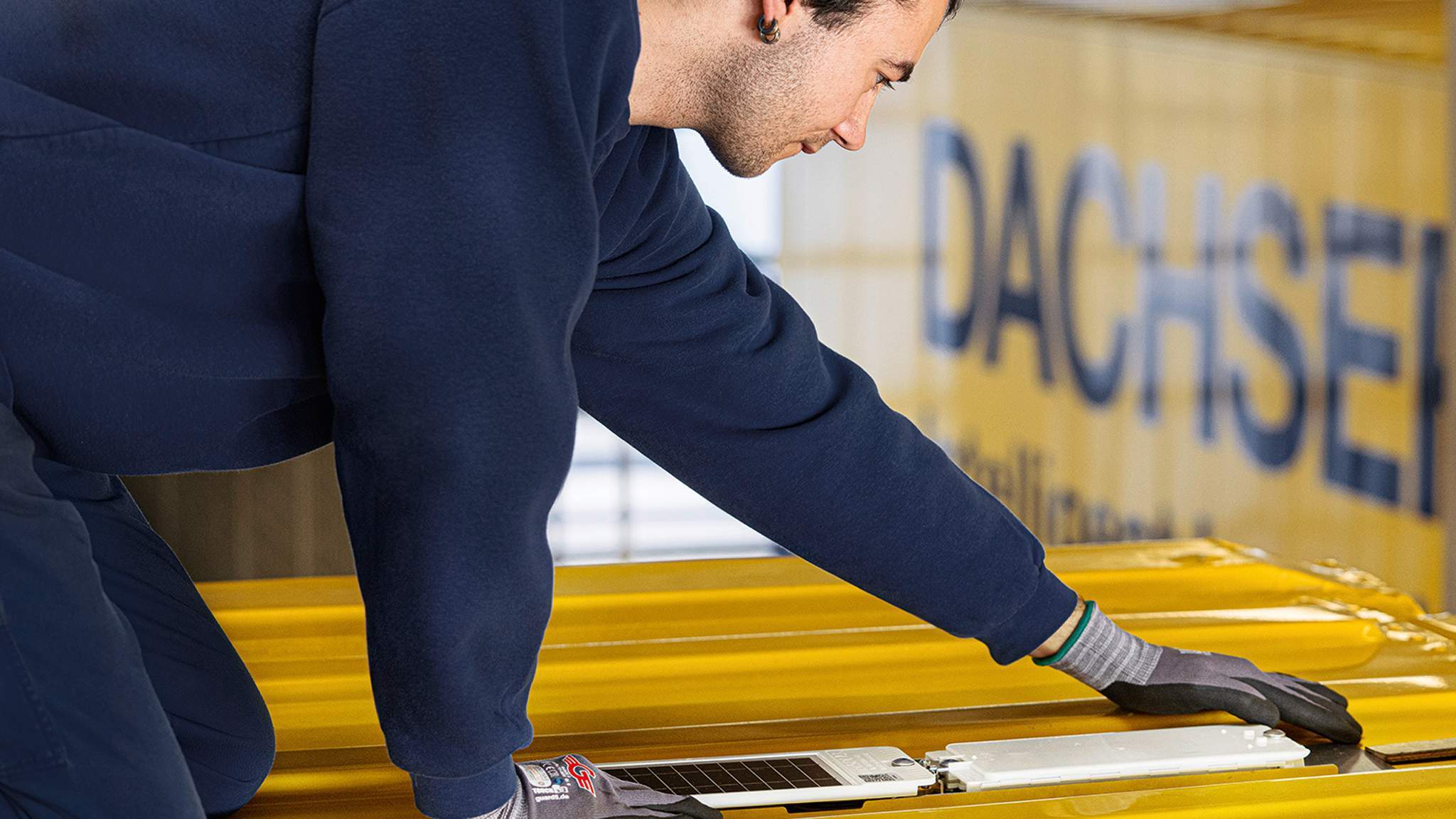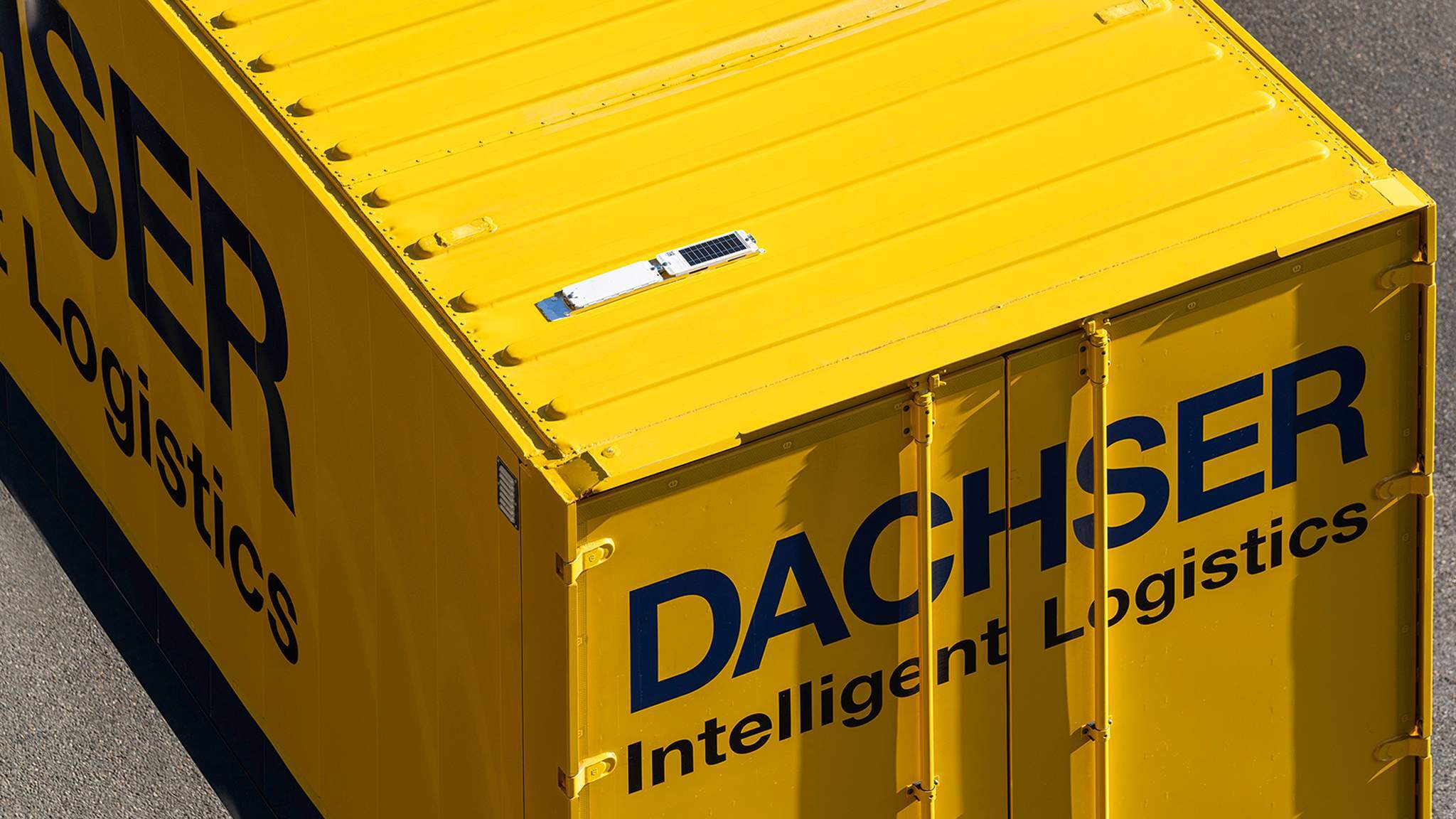Knowing where and how
Shipment tracing and transport management in the Internet of Things: with GPS location tracking using 5G/LPWAN technology and telematics, DACHSER Road Logistics is setting new standards in real-time tracking, arrival-time prediction, and visualization of long-distance groupage shipments.

All good things come from above. This is also true for the Global Positioning System, better known as GPS. Any time we turn on the navigation system in our car to get directions and let someone know what time we’ll arrive, we’re relying on satellites and wireless technology to keep us abreast of any developments. These are well-established systems. They also work in logistics to track a truck’s routes in real time using telematics vehicle tracking. Anyone who knows where the truck is can also track the shipment it’s transporting.
In groupage logistics, the matter is a bit more complex. The swap bodies used for this in long-distance transport are often switched between two trucks that meet en route. And often they wait for the next run, jacked up on their stilts—they might be in the branch yard, at a customer’s loading bay, or in a parking area for an extended break. Being a self-supporting system, the swap body shares neither energy nor information with its tractor unit.
Many things were tried
Enabling these robust containers—and especially their varied content—to be tracked reliably and cost-effectively in the groupage network despite their lack of smart communication capabilities took several years of technology and telecommunications development. Solutions based on traditional 2G/3G wireless standards proved to be too energy- and cost-intensive. Even more than that, they were not sustainable, since these networks are gradually being shut down in Europe.
“So when the LPWAN technologies emerged, we kept a close eye on them from the very early stages and researched them through our DACHSER Enterprise Lab,” says Lars Relitz, Head of Corporate Digital Innovation & Development at DACHSER. LPWAN stands for low-power, wide-area network, a network that is currently being built up around the world in connection with the latest 5G mobile communications standards. “In the beginning, there was no network and no rate structures. But we quickly became convinced that LPWAN technology was the way to go,” Relitz says.
Together with a tracking solutions provider, DACHSER promoted the development of innovative smart tracking devices for use in swap bodies. These devices consist of extremely energy-saving, solar-cell-assisted energy modules, as well as modern satellite-based positioning technology (GPS, Galileo) and wireless modules based on the new 5G/LPWAN networks. They are further secured by additional wireless standards that are still widespread today. This integrated solution fits well with the requirement that the smart tracking devices need to be able to last without maintenance for the full twelve-year service life of the swap body.
A solution especially for the customer - Processing tracking data in real time via a platform is “learned” at DACHSER. For the purpose of seamless temperature tracking in fresh foods, the Food Logistics fleet has been sending transport and movement data to a data platform for years, albeit with a much smaller range of functions. This serves as the basis for the new system with smart tracking devices.
These innovations also benefit customers in particular. “Knowing at all times, in real time, where our swap bodies are located, and being able to process this information accordingly, helps us make the supply chain more transparent. Information on arrival times and potential delays will be more precise, making capacity planning easier and more manageable. This in turn will help optimize transport capacity utilization and make cargo handling processes more efficient,” says Alexander Tonn, COO Road Logistics at DACHSER.
Following successful pilot tests, more than 8,500 swap bodies and 5,000 trailers in the DACHSER Road Logistics network will be equipped with the smart tracking devices by summer 2022. “Then we will be able to consolidate, filter, and process information from thousands of transports, and employees will be able to draw from it everything that is relevant to them—in real time and in an easy-to-grasp visualization,” says Armin Blaschek, Department Head Production Systems at DACHSER, who is managing the rollout of the new telematics system.

More transparency
A central platform is used for visualization and analysis of the data. It combines all position data of the swap bodies, but also of trailers and tractor units, and “weds” them with the shipment data of the transport management system. In addition, charter transports, which are rarely carried out with the company’s own equipment, are also mapped via a specially developed driver app. It not only provides the signal for visualizing the transport, but also enables far-reaching electronic processing of the respective charter order with digital receipts.
